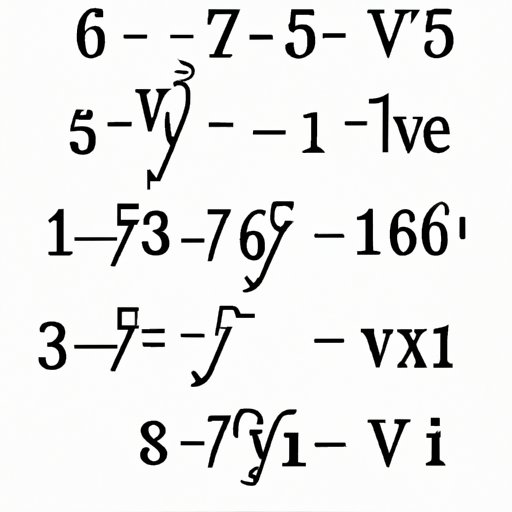
Introduction
Square rooting a negative number is a problem that has puzzled mathematicians for centuries. Though it may seem simple, the complexities of square roots are far-reaching and require a deep understanding of the mathematical concepts on which they are based. In this article, we’ll explore the reasons why square rooting a negative number isn’t possible and how imaginary numbers play a role in solving mathematical equations.
Theoretical and Mathematical Underpinnings
Square roots are a fundamental concept in mathematics. Simply put, a square root is the number that is multiplied by itself to give a certain number. For example, the square root of 16 is 4 because 4 times 4 equals 16. However, when you try to square root a negative number, the answer isn’t as straightforward. In this case, we need to explore the complex number system, which includes both real and imaginary numbers.
The Logical Concept Behind Imaginary Numbers
Imaginary numbers, which are represented by the letter “i”, are a solution to the problem of square rooting negative numbers. They were first introduced in the 16th century but took some time to be accepted. The concept of square rooting a negative number seemed illogical, but the introduction of imaginary numbers provided a logical solution to the problem.
The Myth: Why Can’t Negative Numbers Be Under the Square Root?
Conventional arithmetic operations and common sense dictate that square rooting a negative number can’t be done because no real number when multiplied by itself would result in a negative number. However, the introduction of imaginary numbers made it possible to calculate the square root of negative numbers.
What Happens If You Try To Square Root a Negative Number?
Let’s say we want to calculate the square root of -16. When you attempt to find the square root of a negative number, what you’re left with is an algebraic expression that essentially means the square of a number is negative. In this case, the answer would be 4i, where “i” represents the imaginary unit. Complex numbers like 4i are used in real-world applications, including electrical engineering and physics.
A Beginner’s Guide to Imaginary Numbers: What Are They and How Are They Useful?
Imaginary numbers play a role in many branches of mathematics and scientific disciplines. They are used in topics such as wave mechanics, quantum mechanics, and solid-state physics. Complex numbers, which consist of both real and imaginary parts, are also used in electrical engineering and signal processing. Understanding imaginary numbers is critical for anyone interested in pursuing a career in math or science.
Common Mistakes You Make When Working with Square Roots
When working with square roots, it’s essential to avoid common mistakes that can lead to incorrect answers. One of the most significant mistakes people make when calculating square roots is forgetting to consider the possibility of complex numbers as an answer. Additionally, it’s important to remember that the square of a negative number is always positive.
Conclusion
As we’ve seen, square rooting a negative number is not possible without complex numbers and the introduction of imaginary numbers. Though it may seem counter-intuitive at first, the use of imaginary numbers provides a logical solution to what was once considered an unsolvable problem. Understanding imaginary numbers and the complexities of square roots are essential for anyone seeking to master mathematics and related sciences.




